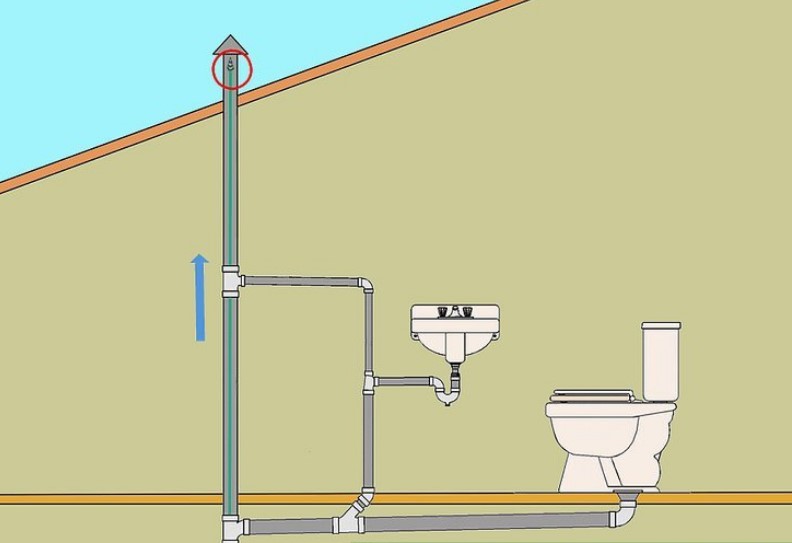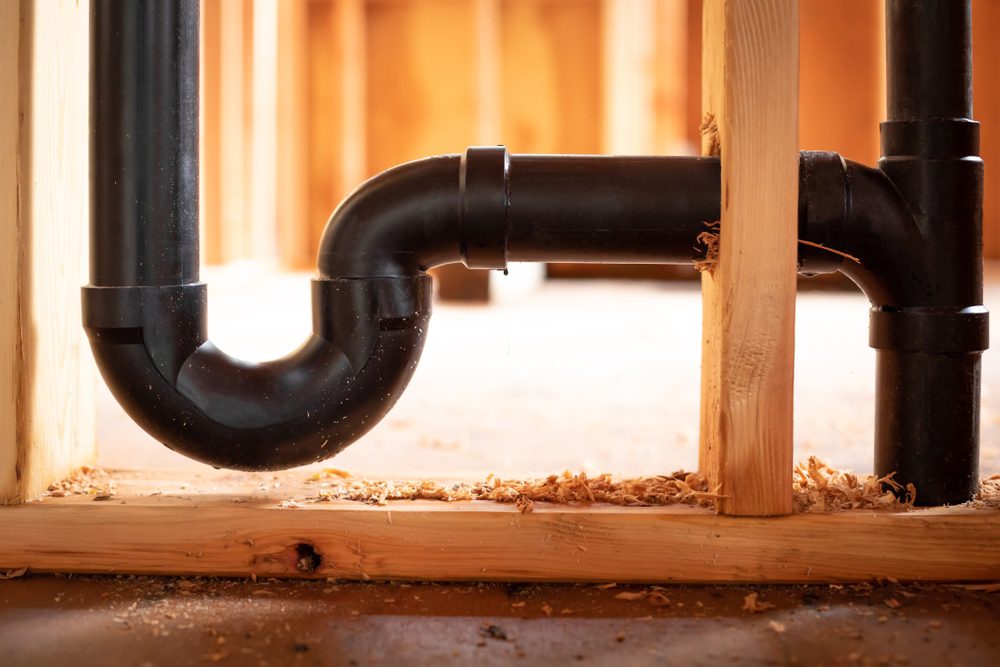Essential Benefits for Adequate Ventilation in Plumbing Systems
Essential Benefits for Adequate Ventilation in Plumbing Systems
Blog Article
The publisher is making several good annotation on What Is a Plumbing Vent and Why Is It Important in general in the content beneath.

Appropriate ventilation in pipes systems is commonly neglected, yet it is vital for maintaining the performance and safety and security of your home's plumbing. Ventilation aids control air pressure, stop the accumulation of harmful gases, and make certain the efficient removal of waste. In this guide, we will discover the importance of appropriate pipes air flow, exactly how it functions, and the advantages it brings to your pipes system.
How Ventilation Works in Pipes Systems
Atmospheric Pressure Guideline
Proper air flow keeps well balanced atmospheric pressure within the pipes system. When water flows via pipes, it displaces air. Without ample air flow, this displacement can produce negative pressure, leading to slow down drains pipes or siphoning of water from catches, which can cause undesirable smells to permeate into the home.
Stopping Sewer Gas Build-up
Among one of the most important functions of plumbing vents is to prevent drain gases, such as methane and hydrogen sulfide, from collecting within the home. These gases can posture major wellness risks and are extremely flammable. Vent pipes permit these gases to leave securely outside.
Helping in Waste Elimination
Air flow helps in the effective removal of wastewater by avoiding airlocks in the drain system. When air can move freely through the vents, it permits water and waste to stream efficiently via the pipes, minimizing the danger of obstructions and backups.
Benefits of Appropriate Ventilation
Boosted System Performance
Effectively aerated pipes systems operate much more efficiently, with less obstructions, faster draining pipes, and much less strain on the pipelines. This efficiency extends the life expectancy of the plumbing system.
Improved Air Top Quality
By preventing drain gases from entering your home, proper air flow adds to better indoor air high quality, making your living environment healthier and more comfy.
Stopping Water Damage
Adequate ventilation assists avoid water from being siphoned out of catches, which can bring about drain gases going into the home and causing water damages with time.
Actions to Guarantee Proper Air Flow
Consulting Pipes Codes
Constantly consult neighborhood plumbing codes when designing or customizing your pipes system. These codes supply the essential standards for proper venting and ensure your system fulfills security standards.
Regular Assessment and Maintenance
Routine examinations can help determine prospective air flow concerns before they come to be major problems. Maintenance tasks, such as cleaning up vent pipes and checking for clogs, are necessary for keeping the system in good working order.
Expert Setup
For brand-new installations or significant alterations, it's important to hire a specialist plumbing professional. They have the know-how to make sure the ventilation system is appropriately developed and mounted according to code.
Understanding Ventilation in Plumbing
Ventilation in plumbing refers to the network of pipelines that allow air to flow via the drain system. These vents serve several purposes, consisting of managing atmospheric pressure within the pipelines, preventing drain gases from getting in the home, and assisting in the smooth circulation of wastewater.
Types of Plumbing Vents
Main Stack Vent
The major pile vent, likewise known as the vent pile, is the key vent in a pipes system. It prolongs from the main drain align with the roofing system, allowing gases to get away and fresh air to get in the system.
Branch Vent
Branch vents connect to the primary pile vent and offer specific components, such as sinks, toilets, and showers. These vents make sure that each component has appropriate air flow to operate appropriately.
Air Admission Shutoff (AAV).
An Air Admittance Valve (AAV) is a one-way shutoff that permits air to enter the plumbing system without the demand for a typical air vent pipeline prolonging with the roof. AAVs are frequently made use of in improvements or locations where setting up a typical air vent is impractical.
Signs of Poor Ventilation in Pipes.
Slow Draining Fixtures.
If your sinks, bathtubs, or commodes are draining slowly, maybe an indicator of poor air flow. Insufficient air flow can develop a vacuum cleaner impact, making it difficult for water to drain properly.
Gurgling Sounds.
Gurgling sounds originating from drains are commonly a result of air being drawn via water traps due to negative pressure in the pipes. This is a clear sign of inadequate air flow.
Undesirable Smells.
Sewer smells inside your home are a warning that your pipes system is not effectively ventilated. This can imply that sewage system gases are not being properly vented outside, resulting in potentially dangerous problems.
Usual Air Flow Errors.
Insufficient Vent Sizing.
Using undersized air vent pipes can lead to inadequate air circulation and stress inequalities in the system. It's essential to use vents that fulfill the certain requirements of your pipes system.
Improper Vent Positioning.
Putting vents too far from the components they serve can minimize their efficiency. Appropriate positioning makes sure that air can move freely and successfully with the system.
Disregarding Code Requirements.
Building ordinance supply certain standards for plumbing air flow. Disregarding these codes can lead to a system that fails to operate properly and might cause expensive repair work or carcinogen.
Final thought.
Appropriate air flow is a crucial element of any pipes system, making certain that it works successfully and safely. By recognizing the value of air flow, recognizing the signs of inadequate ventilation, and taking steps to preserve your system, you can avoid costly concerns and secure your home's air high quality.
4 Things You Should Know About Your Plumbing Vents
What Plumbing Vents Are
Also called a vent stack, a plumbing vent is a vertical pipe attached to your drain line that runs through your roof. The plumbing vent pipe, or plumbing air vent, removes gas and odors from your plumbing system and allows fresh air to enter the pipes, helping the water to flow out of the drain pipes.
What Plumbing Vents Do
Plumbing vents have two basic functions. One of which is to allow unpleasant smelling wastewater and sewer gasses to escape your plumbing system instead of entering your home. Plumbing vent pipes are typically located on roofs, away from windows, to ensure the fumes exit the home completely.
The other function of the plumbing vent is to move fresh air into your plumbing system. This helps move water through every plumbing fixture in your house, like toilets and sink drains. Think of the way in which you need to let a little air into the bottle as you pour soda in order to make the drink flow smoothly.
Different Types of Plumbing Vents
True vent: This is the most common vent option. In simplest terms, a true vent is a vertical pipe attached to your drain line that exits through the roof. They often function as the main vent that other fixtures can connect to. Re-vent pipe or auxiliary vent: Attached to the drain line near specific plumbing fixtures, re-vent pipes run up and over to connect to the main vent. Common vent: Two plumbing fixtures installed on opposite sides of a wall are typically tied into the vent stack using something known as a sanitary cross. Wet vent: This venting option operates as a drain pipe and a vent at the same time. Wet vent drainage systems drain water from one fixture while venting the air from another. Although they’ve been used for over 100 years, wet vent systems have only recently been added to the plumbing code in many areas. If you’re planning on installing one in a bathroom remodel, make sure you check your local code prior to construction. Loop vent: For free-standing fixtures like kitchen island sinks, loop vents are ideal. These vent pipes run under the floor, rise from the P-trap, and create a loop inside the cabinet sink. Air admittance valve: An AAV is a one-way mechanical valve typically installed at the site of the plumbing fixture. AAVs allow venting to occur without having to tie into a larger venting system. They’re ideal for venting fixtures where you aren’t able to easily connect to an existing vent system. Common Plumbing Vent Issues
Although vent pipes typically don’t have water flowing through them, they’re still subject to many typical plumbing issues. For example, clogs are one of the most common problems associated with sewer vent pipes. If your vent pipe gets clogged, all of your plumbing fixtures tied into the vent stack will be affected.
A sink with a slow drain that bubbles and gurgles or a strong sewage smell around your toilet are both indicators that your toilet vent pipe is clogged. Because most vent pipes exit through the roof, old leaves, twigs or even a bird’s nest could be clogging the pipe.
Clogs in your vent pipe system cause a buildup of negative pressure, meaning that water won’t be able to flow out of your home very well. It’s similar to putting your finger over the opening of a straw to trap water inside. When you remove your finger, the water is able to flow out of the straw.
If you suspect you have any blockage in your vent, make sure you have a professional come examine the situation. Left unchecked, a blocked air vent can lead to other costly repairs, like leaks and sediment buildup.
Under Pressure
Pipe vents are essential aspects of a home’s plumbing system. Owning a home means learning about all sorts of things you never put much thought into before. But by understanding as much as you can about the important systems of your home, you can keep those budgets intact and those anxiety levels low.
https://www.homeserve.com/en-us/blog/home-improvement/plumbing-vents/

I was introduced to that article about What Is a Plumbing Vent and Why Is It Important from an acquaintance on our other web page. Be sure to pause to promote this blog posting if you enjoyed reading it. Many thanks for being here. Return soon.
Go Company Report this page